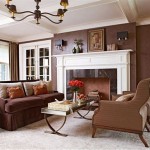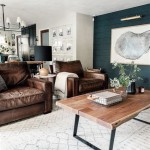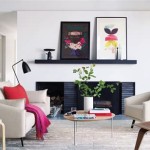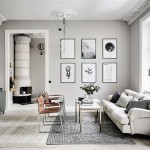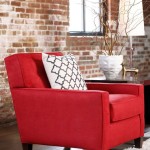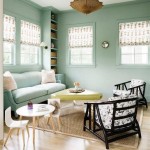Unique Decor for Living Room: Elevating Your Space with Individuality
The living room serves as the central hub for many homes, acting as a space for relaxation, entertainment, and social gatherings. Consequently, its decor plays a vital role in establishing the overall ambiance and reflecting the homeowner's personal style. Choosing unique decor elements can transform a generic space into a captivating environment that invites conversation and showcases individuality. The pursuit of unique living room decor involves moving beyond mass-produced items and embracing pieces that possess character, history, or artistic merit. This article explores various facets of unique living room decor, offering insight into how to achieve a personalized and visually appealing space.
Incorporating Vintage and Antique Finds
One of the most effective methods for injecting uniqueness into a living room involves incorporating vintage and antique finds. These pieces often carry a rich history and a distinctive aesthetic that cannot be replicated with modern reproductions. The appeal of vintage and antique decor stems from its inherent rarity and the sense of nostalgia it evokes. The process of sourcing these items can be an enjoyable journey, involving visits to antique shops, flea markets, estate sales, and online auction sites. Each piece has a story waiting to be integrated into the homeowner's narrative.
Considerations when incorporating vintage and antique finds include condition, scale, and compatibility with the existing decor. Pieces may require restoration or repair, depending on their age and usage. It is crucial to assess the structural integrity of furniture and address any potential issues before introducing it into the living room. The scale of vintage and antique items should be proportional to the size of the room to avoid overwhelming the space or appearing diminutive. Furthermore, the style and color palette of vintage and antique pieces should harmonize with the overall design scheme to create a cohesive aesthetic.
Examples of vintage and antique items that can enhance a living room's uniqueness include: a restored mid-century modern armchair, a vintage Persian rug with intricate patterns, an antique brass floor lamp, a collection of vintage ceramic vases, or a repurposed apothecary cabinet used as a display case. These elements not only add visual interest but also serve as conversation starters, engaging visitors with their historical significance. The strategic placement of these items can transform a commonplace living room into a gallery of curated artifacts.
Embracing Art and Sculptural Elements
Art and sculptural elements are powerful tools for expressing individuality and creating a visually stimulating living room environment. Moving beyond commercially produced prints and posters, one can explore original artwork, limited-edition prints, and handcrafted sculptures to elevate the space's aesthetic appeal. The selection process should reflect personal taste and artistic preferences, ensuring that the chosen pieces resonate with the homeowner's sensibilities.
Different art forms can contribute to a unique living room ambiance. Large-scale abstract paintings can serve as focal points, injecting color and dynamism into the room. Photographic prints, particularly those depicting landscapes or portraits, can add depth and intrigue. Sculptures, whether crafted from metal, wood, or ceramic, introduce texture and three-dimensional interest. The placement of these elements is crucial. A strategically positioned sculpture on a console table or a gallery wall showcasing a curated collection of artwork can significantly enhance the living room's visual impact.
When selecting art and sculptural elements, consider the scale of the pieces in relation to the size of the room and the surrounding furniture. Oversized artwork can be impactful but may overwhelm a small space. Similarly, a diminutive sculpture might get lost in a larger room. The color palette of the artwork should complement the existing decor to create a cohesive design. It is also essential to consider the lighting, as proper illumination can accentuate the textures and colors of the art, enhancing its overall presence.
Beyond traditional artwork, consider incorporating handmade textiles as art pieces. A woven tapestry hung on the wall, or a collection of uniquely patterned throw pillows can add warmth, texture and visual interest.
Personalized Lighting Fixtures and Decorative Accessories
Lighting and decorative accessories offer ample opportunities to infuse a living room with unique character. Moving beyond standard lighting options, consider incorporating handcrafted lamps, repurposed fixtures, or custom-designed shades. Similarly, decorative accessories such as throw pillows, blankets, vases, and decorative trays can be curated to reflect the homeowner's unique style and preferences. Attention to detail in these seemingly minor elements can significantly impact the overall aesthetic of the living room.
Unique lighting fixtures can transform a living room's ambiance and serve as focal points. Hand-blown glass pendants, sculptural table lamps, or vintage chandeliers can add a touch of elegance and individuality. Consider experimenting with different lighting techniques, such as layering ambient, task, and accent lighting, to create a dynamic and versatile lighting scheme. Smart lighting technologies can also be integrated to allow for customized lighting settings, enhancing the mood and functionality of the space.
Decorative accessories offer a diverse range of possibilities for personalization. Throw pillows and blankets can introduce color, texture, and pattern while enhancing the comfort of seating areas. Vases can be used to display fresh flowers or greenery, adding a touch of nature to the living room. Decorative trays can serve as functional and stylish organizers for coffee table essentials. When selecting these accessories, consider the overall design scheme and choose items that complement the existing furniture and decor.
Consider incorporating natural elements into your decor. A driftwood sculpture on a console table, a collection of seashells displayed in a glass jar, or a terrarium filled with succulents can bring the outdoors in and add a touch of organic beauty to the living room. These elements not only enhance the visual appeal of the space but also promote a sense of tranquility and connection with nature.
Repurposing and Upcycling Existing Items
Repurposing and upcycling existing items provides an eco-conscious and creative approach to unique living room decor. This method involves transforming discarded or underutilized objects into functional and aesthetically pleasing pieces. Repurposing reduces waste, promotes sustainability, and allows for the creation of one-of-a-kind decor elements that reflect the homeowner's ingenuity. The possibilities for repurposing and upcycling are vast, limited only by imagination and resourcefulness.
Examples of repurposing and upcycling include transforming old wooden pallets into a coffee table, converting vintage suitcases into storage containers, using reclaimed wood to create a wall-mounted shelving unit, or turning old glass bottles into unique lighting fixtures. The process often involves cleaning, repairing, and refinishing the repurposed items to enhance their aesthetic appeal and functionality. The key is to identify items that possess potential and envision how they can be transformed into something new and useful.
When repurposing and upcycling, safety should be a primary consideration. Ensure that any modifications or alterations are performed safely and that the repurposed items are stable and structurally sound. Use appropriate tools and materials and follow safety guidelines to prevent injuries. It is also important to consider the aesthetic integration of repurposed items into the existing decor. Choose finishes and colors that complement the overall design scheme and create a cohesive visual narrative.
Consider using vintage maps framed as artwork, old ladders repurposed as bookshelves, or antique windows transformed into decorative mirrors. These repurposed items not only add character to the living room but also serve as conversation starters, showcasing the homeowner's creativity and commitment to sustainability.
Implementing Unique Textiles and Patterns
Textiles and patterns play a crucial role in shaping the aesthetic and tactile experience of a living room. Moving beyond conventional fabrics and designs, one can explore unique textiles, intricate patterns, and unconventional textures to create a visually stimulating and inviting space. The strategic use of textiles and patterns can add depth, interest, and personality to the living room, transforming it from a generic space into a reflection of individual style.
Consider incorporating textured fabrics such as velvet, linen, or bouclé to add depth and tactile appeal to upholstery and window treatments. Experiment with bold patterns such as geometric designs, floral motifs, or tribal prints to create visual interest and dynamism. Layering different textures and patterns can create a rich and complex aesthetic. For example, pairing a velvet sofa with linen throw pillows and a geometric patterned rug can create a visually engaging and comfortable seating area.
When implementing unique textiles and patterns, it is essential to consider the scale and color palette. Large-scale patterns can be impactful but may overwhelm a small space. Similarly, a vibrant color palette can energize a room but may also be overwhelming if not balanced with neutral tones. The key is to create a harmonious balance between different textures, patterns, and colors to achieve a cohesive and visually appealing design.
Consider incorporating handcrafted textiles such as embroidered cushions, quilted blankets, or hand-woven rugs. These items often possess unique details and irregularities that add character and charm to the living room. Experiment with different textile techniques such as batik, tie-dye, or block printing to create custom-made decor elements that reflect personal style and creativity.
By incorporating these strategies, homeowners can transform their living rooms into unique and personalized spaces that reflect their individual tastes and preferences. The journey of creating a unique living room is an ongoing process of exploration, experimentation, and refinement.
Living Room Decor Ideas For Your Home Design Cafe

Small Living Room Ideas Decorating

Living Room Decor Ideas Embracing The Future

Modern Living Room Ideas For Every Style July 2025

20 Boho Living Room Ideas For A More Relaxed Home

85 Modern Living Room Design Ideas For The Ultimate Hangout Spot

80 Gorgeous Living Room Decorating Ideas For Every Style

Indulge In Opulence 50 Luxury Living Rooms To Inspire Your Home Decor

Top 10 Ideas On How To Decorate A Small Living Room Decorilla Online Interior Design

Best Wall Decor Ideas For A Stylish Home Makeover

